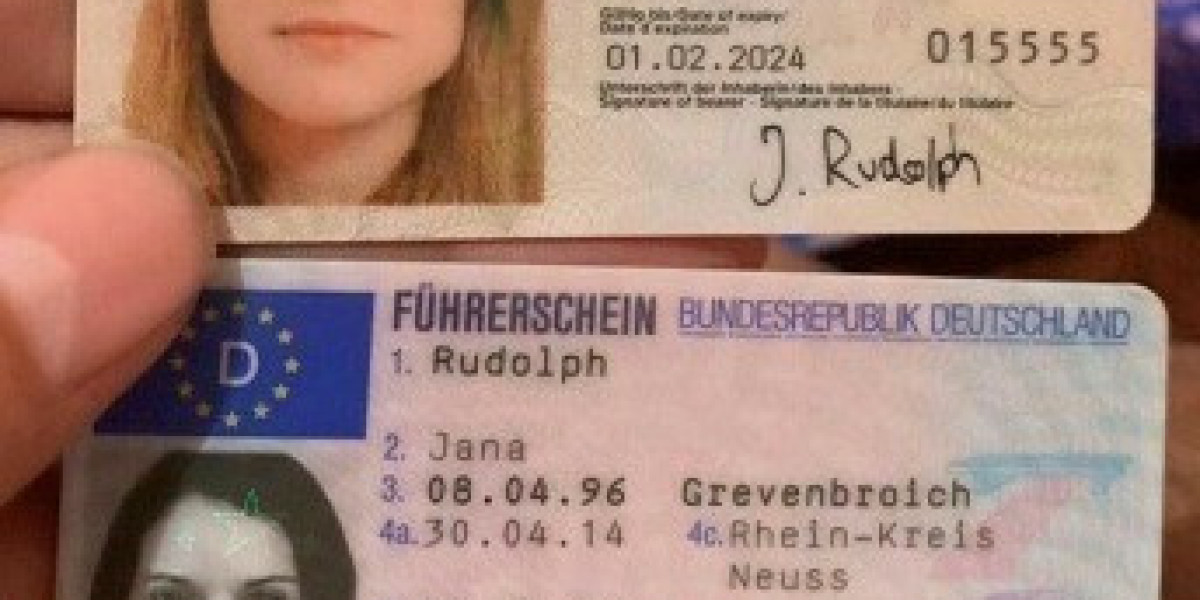Understanding the UK Driver's License: A Comprehensive Guide
In the United Kingdom, acquiring a driver's license is an essential step towards independence and mobility. It is not just a gateway to personal freedom but likewise a substantial obligation. This post seeks to outline the procedure of obtaining a driver's license in the uk online driving licence, the numerous categories of licenses, and some crucial policies that drivers must follow.

Types of UK Driver's Licenses
Before diving into the application procedure, it is important to comprehend the different kinds of driver's licenses available in the UK. The main categories are:
Provisional License: This is the initial step for anyone aiming to learn to drive. It allows the holder to practice driving while under the supervision of a qualified driver.
Complete License: Once the driving test has been effectively finished, the person will receive a full driver's license, which allows them to drive individually.
Special Licenses: There are unique licenses for particular vehicles such as motorbikes (Category A), buses (Category D), and trucks (Category C).
European Driving License: Though it stands out from the buy uk driver license online driver's license, the European driving license enables driving in numerous EU nations without the requirement for an additional license.
The Process of Obtaining a UK Driver's License
1. Request a Provisional License
To begin the journey towards getting a driver's license, striving motorists should initially get a provisionary license. Here's how to do it:
- Eligibility: Applicants should be at least 15 years and 9 months old.
- Application: Individuals can apply online drivers license (http://athrconsultancy.in/employer/buy-Uk-registered-driving-licence) or through postal services by sending a leaflet from the Driver and Vehicle Licensing Agency (DVLA).
- Cost: A fee is required for application (as of 2023, it's about ₤ 34 online and ₤ 43 by means of post).
- Identity Proof: Acceptable recognition includes a passport or a biometric residence permit.
2. Get ready for the Theory Test
As soon as the provisionary license is obtained, the next action is to get ready for the theory test, which examines a learner driver's understanding of road guidelines and risks. This includes:
- Multiple-Choice Questions: A series of questions based upon the Highway Code.
- Risk Perception Test: An assessment to recognize potential hazards while driving utilizing video clips.
3. Take Driving Lessons
It is usually suggested to take professional driving lessons from an Approved Driving Instructor (ADI). These lessons offer crucial hands-on experience and understanding about road security, along with helping students end up being comfy behind the wheel.
4. Book the Practical Driving Test
After passing the theory test and acquiring adequate driving skills, students should schedule a practical driving test through the DVLA. The screening procedure generally involves:
- Driving Maneuvers: Candidates are assessed on their ability to carry out necessary driving methods such as parallel parking and emergency stops.
- Roadway Safety Compliance: Demonstration of compliance with roadway signs, signals, and rules.
5. Get a Full Driver's License
Upon success in the useful driving test, the prospect will receive a pass certificate which enables them to get a full driver's license. The DVLA will send a full license if all requirements have been fulfilled.
Driving Regulations and Responsibilities in the UK
When a full driver's license has been gotten, it is essential for drivers to understand and comply with the laws and regulations governing roadway usage in the UK. Here are a few key obligations:
- Insurance: It is obligatory for all drivers to have legitimate car insurance coverage before supporting the wheel. This secures versus financial loss from accidents or theft.
- Road Tax: Vehicle import tax duty, commonly called road tax, must be paid each year.
- MOT Test: Cars older than 3 years need to undergo a yearly MOT (Ministry of Transport) test to ensure their roadworthiness.
- Follow Speed Limits: Each road has actually designated speed limits that must be followed.
- Usage of Seatbelts: Wearing seatbelts is compulsory for drivers and guests.
FAQs about UK Driver's License
1. For how long does it require to get a driver's license in the UK?
The time required to acquire a driver's license varies significantly between individuals. Usually, students spend about 45 hours getting trained with an instructor, followed by an extra 22 hours of personal practice. After booking tests, the processing of applications can also take a few weeks.
2. Can I drive with a provisionary license?
Yes, you can drive with a provisional license, but you should be accompanied by a driver who is at least 21 years of ages and holds a complete license for the type of vehicle being driven.
3. What occurs if I fail my driving test?
If you fail your driving test, the examiner will provide feedback on locations for improvement. You can retake the test, but it is usually advised to take a few extra lessons to reinforce your skills before trying again.
4. Can I drive in the UK with an EU driving license?
Yes, EU driving licenses stand in the UK. Nevertheless, those preparing to remain in the UK for more than 12 months should think about exchanging their EU license for a UK one.
5. What do I need to do if I lose my driving license?
If your driving license is lost or taken, you should report it to the DVLA and request a replacement. You will require to provide identification and pay a charge.
Navigating the process of getting a driver's license in the UK can seem challenging, however understanding each step streamlines the journey. From acquiring buy a uk driving licence provisionary license to passing the practical test, each stage prepares for accountable driving and compliance with the laws governing road use. Always bear in mind that driving is a privilege that features responsibilities, and continued adherence to the guidelines makes sure the security of all road users.








